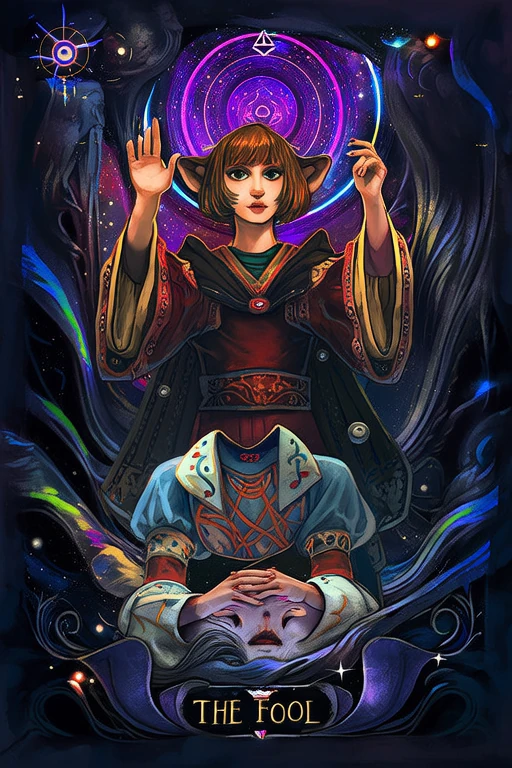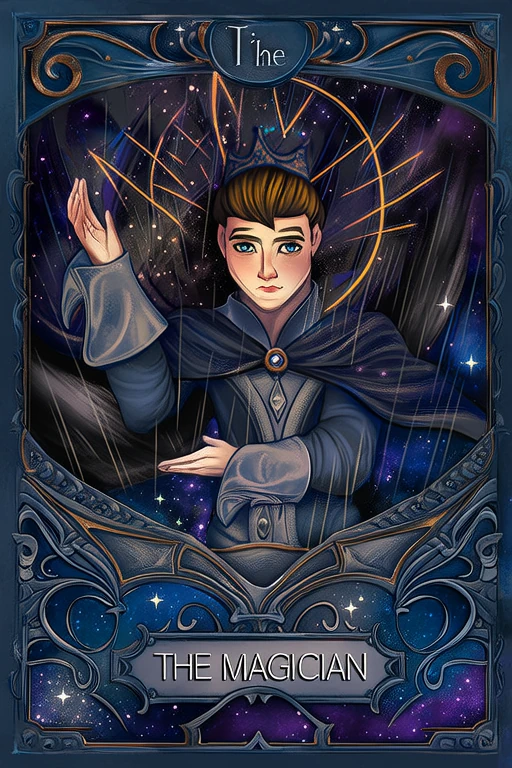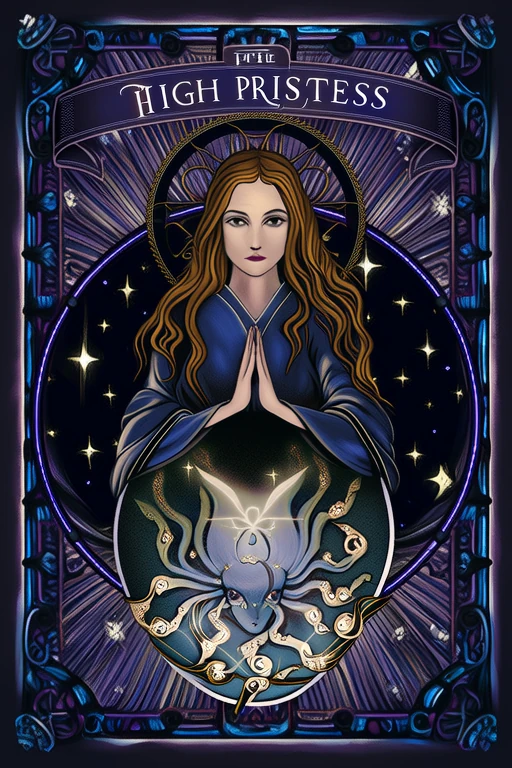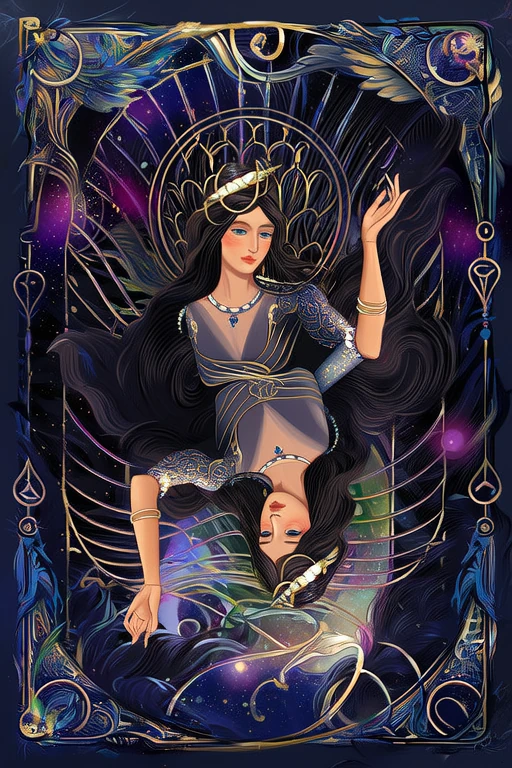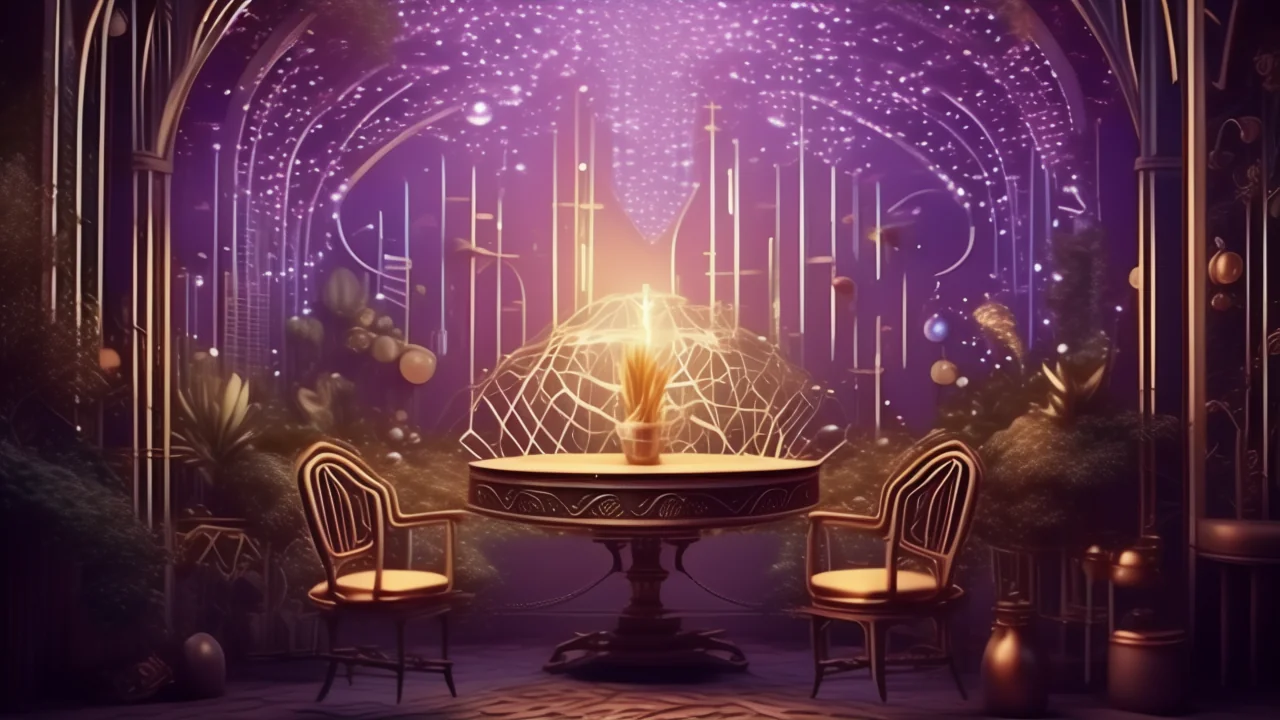
Death
Discover the deep meaning of Death with our free AI-powered tarot interpretation. Get instant, accurate readings based on advanced tarot knowledge.

Keywords
Upright Meaning
Endings, change, transformation, transition
Reversed Meaning
Resistance to change, inability to move on, stagnation
Full Interpretation
Death represents transformation, change, and the end of one phase to begin another.
In-Depth Analysis
📜 Historical Background
The Death card, numbered XIII in the Major Arcana of the tarot, has a rich and complex history that spans centuries. Its origins trace back to the early 15th century in Europe, particularly in Italy and France, where tarot decks were initially used for playing games before evolving into tools for divination and spiritual exploration. The earliest known tarot decks, such as the Visconti-Sforza and the Marseille decks, depicted the Death card as a figure of transformation rather than literal demise. In these early illustrations, Death is often shown as a skeleton wielding a scythe or sword, standing over a fallen king or other figures symbolizing the end of power, status, or life as it was known.
In medieval European culture, the image of Death was commonly represented in the 'Dance of Death' (Danse Macabre), a symbolic artistic motif that emphasized the universality of death across all social classes. This concept heavily influenced the visual representation of the Death tarot card, reinforcing the idea that death is not an end, but a transition—a necessary part of the life cycle. Over time, the card became associated with change, endings, and rebirth, especially as tarot evolved from a gaming tool to a mystical and esoteric instrument during the 18th and 19th centuries.
During the Hermetic Revival and the rise of occultism in the late 19th century, the Death card was reinterpreted through a more symbolic and spiritual lens. The Rider-Waite-Smith deck, published in 1909 and illustrated by Pamela Colman Smith under the guidance of A.E. Waite, became one of the most influential tarot decks in modern times. In this version, the Death card features a skeletal figure riding a white horse, holding a black banner with a white rose, symbolizing both the end and the promise of new beginnings. The imagery in this deck helped standardize the symbolism of the Death card across various modern tarot traditions.
Throughout history, different cultures have interpreted the Death card in unique ways. In some Latin American traditions, for example, the Day of the Dead (Día de los Muertos) offers a more celebratory view of death as a continuation of life, which aligns with the card's deeper meaning of transformation. In contrast, in Western societies, the card has often been feared or misunderstood, seen as a harbinger of doom rather than a symbol of necessary change.
As tarot continues to evolve in the 21st century, the Death card remains a powerful and often misunderstood archetype. Its historical journey reflects humanity’s ongoing relationship with death—not as a final end, but as a gateway to renewal, growth, and spiritual evolution.
Symbolism & Imagery
The Death card is rich in symbolic meaning, with each visual element contributing to its deeper interpretation. In most traditional decks, the central figure is a skeleton on horseback, often depicted as Death itself, riding a pale or white steed. This imagery draws from the biblical Four Horsemen of the Apocalypse, where Death is one of the harbingers of the end times. However, in tarot, this figure does not represent literal death but rather the end of a cycle or phase in life. The white horse symbolizes purity and spiritual transition, while the skeletal rider embodies the impartial nature of change—neither good nor evil, but inevitable.
One of the most notable symbols in the Death card is the black banner bearing a white rose, which the skeleton holds aloft. The rose is a symbol of transformation and spiritual awakening, suggesting that from endings come new beginnings. In some decks, this banner may also feature a sun rising in the background, further reinforcing the theme of rebirth and renewal. The imagery often includes a river or body of water, representing the boundary between life and death, or the flow of time and the unconscious mind.
Colors play a significant role in the symbolism of the Death card. Black, often associated with mourning, also signifies the unknown, mystery, and the void from which new life emerges. White, seen in the horse and the rose, represents purity, clarity, and spiritual transformation. Some modern decks incorporate additional colors, such as gold or silver, to emphasize the mystical and alchemical nature of the card.
Numerologically, the number XIII is often viewed with superstition, partly due to its association with betrayal and misfortune (as in the Last Supper, where Judas was the thirteenth guest). However, in tarot, the number thirteen signifies transformation, breaking down the old to make way for the new. This numerical symbolism aligns with the card's overall theme of necessary endings and rebirth.
Across different cultures and tarot traditions, the interpretation of the Death card varies. In the Marseille tradition, the card is more stark and symbolic, focusing on the inevitability of change. In contrast, the Rider-Waite-Smith deck and its many derivatives emphasize the cyclical nature of life and death, often portraying the card as a necessary and even positive force in a reading. In some Eastern interpretations, the Death card is seen as a sign of balance and the natural flow of energy, akin to the concept of yin and yang.
When the Death card appears upright in a reading, it typically signifies a major transition, the end of a relationship or phase, and the beginning of a new chapter. It encourages the querent to let go of what no longer serves them and embrace transformation. In reverse, the card may indicate resistance to change, fear of the unknown, or clinging to the past. Either way, the Death card invites the seeker to confront the impermanence of life and the power of renewal.
In the context of the Major Arcana, the Death card follows the Hermit and precedes Temperance, symbolizing the completion of one journey and the beginning of another. It serves as a reminder that endings are not to be feared but embraced as part of the natural rhythm of life.
Psychological Insights
From a psychological perspective, the Death card resonates deeply with the theories of Carl Jung, particularly his concept of archetypes and the process of individuation. In Jungian psychology, the archetype of Death represents transformation, the dissolution of the ego, and the rebirth of the self. Just as the Death card symbolizes the end of one phase and the beginning of another, so too does the psyche undergo cycles of death and rebirth as it integrates shadow aspects and moves toward wholeness. The card often appears when an individual is undergoing a significant psychological shift—perhaps the end of a limiting belief, the dissolution of a harmful relationship, or the shedding of old identities.
In modern life, the Death card serves as a powerful reminder that change is not only inevitable but necessary for growth. Whether in career transitions, personal relationships, or emotional healing, the card encourages individuals to release what no longer serves them. It is often seen in readings when someone is resisting change or clinging to the past, urging them to embrace the unknown and trust the process of transformation. This can be particularly relevant in decision-making scenarios where letting go is required to move forward.
On a personal growth level, the Death card challenges individuals to confront their fears—especially the fear of the unknown or the fear of losing control. It promotes self-awareness by asking the querent to examine what they are holding onto unnecessarily and what they might gain by releasing it. This introspection can lead to profound inner healing, especially when dealing with grief, loss, or stagnation.
Therapeutically, the Death card can be a valuable tool in counseling and self-help practices. Therapists and life coaches who incorporate tarot into their sessions may use this card to help clients process endings, whether they be emotional, relational, or situational. It can aid in navigating life transitions, such as career changes, breakups, or the loss of a loved one, by reframing these experiences as necessary steps toward renewal and growth.
In modern spiritual practices, the Death card is often used in shadow work, a form of inner exploration that involves confronting and integrating the unconscious parts of the self. It is also aligned with the concept of rebirth found in many spiritual traditions, such as the death and resurrection motifs in Christianity, the idea of reincarnation in Eastern philosophies, and the cyclical nature of life in indigenous and pagan beliefs. Whether used in meditation, journaling, or ritual, the Death card serves as a reminder that true transformation requires the courage to let go and the faith to embrace what comes next.
Correspondences
The Death card is deeply connected to various esoteric and metaphysical correspondences that enhance its symbolic and energetic significance. Astrologically, the card is ruled by Scorpio, a water sign associated with transformation, depth, and regeneration. Scorpio is governed by Pluto (modern ruler) and Mars (traditional ruler), both of which emphasize themes of power, intensity, and rebirth—key elements of the Death card's energy. Additionally, the card is sometimes linked to the eighth house in astrology, which governs death, shared resources, and deep psychological transformation.
Gemstones and crystals associated with the Death card include obsidian, onyx, and hematite—stones that provide grounding, protection, and the ability to release negative energies. These minerals are often used in shadow work and emotional healing, aligning with the card’s transformative nature. Herbs and essential oils such as sage, myrrh, vetiver, and frankincense are also connected to the Death card, as they are traditionally used in rituals of purification, mourning, and spiritual transition.
Elementally, the Death card is tied to water, representing the emotional and subconscious realms. This connection underscores the card's role in deep emotional transformation and the necessity of navigating the inner tides of change. Seasonally, the card resonates with autumn, the time of year when nature begins to shed and prepare for renewal. In terms of time, the Death card is often associated with midnight, a liminal hour symbolizing the threshold between one day and the next.
In energy work, the Death card is closely linked to the sacral chakra (Svadhisthana) and the root chakra (Muladhara). The sacral chakra governs emotional flow and change, while the root chakra provides grounding and stability—both essential for navigating the transitions represented by the card. Working with this card in chakra balancing or energy healing can help individuals release stagnant energies and embrace transformation with greater ease.
Numerologically, the number thirteen, which corresponds to the Death card, is often viewed as a number of transformation, upheaval, and rebirth. While some cultures associate thirteen with bad luck, in tarot, it signifies the completion of a cycle and the beginning of a new one. This numerical symbolism reinforces the card’s message of necessary endings and the potential for renewal that follows.
❓ Frequently Asked Questions
The Death card is one of the most misunderstood cards in the tarot, often causing concern when it appears in a reading. Here are some of the most frequently asked questions and clarifications regarding this powerful Major Arcana card:
**1. Does the Death card mean actual death?** No, the Death card does not typically indicate literal death. Instead, it symbolizes major life changes, endings, and transitions. It may refer to the conclusion of a relationship, job, phase, or mindset, followed by a necessary rebirth or new beginning.
**2. Why does the Death card often scare people?** Its name and imagery can be unsettling, especially to those unfamiliar with tarot. Many associate the card with doom or tragedy due to cultural superstitions and media portrayals. However, in tarot, it represents transformation and growth rather than literal demise.
**3. What does the Death card mean in love readings?** In a love context, the Death card suggests the end of a relationship or a significant shift in the dynamics of a partnership. It may indicate that a romantic situation must evolve or conclude to allow for healthier connections in the future.
**4. How should beginners interpret the Death card?** Beginners should understand that the Death card is about change, not necessarily negative change. It encourages release, letting go, and embracing the unknown. It is a call to reflect on what needs to be transformed or released in one's life.
**5. What are effective spreads for reading the Death card?** A three-card spread can be useful—past, present, and future—to understand what is ending, what is currently shifting, and what is emerging. Alternatively, a Celtic Cross spread can offer deeper insight into the transformation at hand and how it affects different areas of life.
**6. How does the Death card interact with other cards?** When paired with cards like the Tower, it may indicate a sudden but necessary upheaval. With the Hanged Man, it suggests a need for surrender and acceptance. With the Empress or the Sun, it can indicate that the end of one thing leads to fertility, joy, or success.
**7. What advice should be given when Death appears in a reading?** Encourage the querent to embrace change, release attachments to the past, and trust in the process of transformation. Remind them that endings are not inherently negative—they are often essential for growth and renewal.
Professional tarot readers approach the Death card with sensitivity and clarity, ensuring that the seeker understands its symbolic meaning rather than fearing it. By framing the card as a guide through necessary transitions, the Death card becomes a powerful ally in navigating life’s inevitable changes.
Practical Readings
Love Reading – Free • Online • AI • Instant • Accurate
In love, Death upright: Endings, change, transformation, transition. Reversed: Resistance to change, inability to move on, stagnation.
Career Reading – Free • Online • AI • Instant • Accurate
For career, Death upright: Endings, change, transformation, transition. Reversed: Resistance to change, inability to move on, stagnation.
Yes‑No Reading – Free • Online • AI • Instant • Accurate
As a quick yes‑no: upright tends toward “yes”, reversed leans “no”—interpret within your question’s context.
FAQ
What does Death mean in tarot?
Death represents endings, change, transformation, transition. This card encourages Death represents transformation, change, and the end of one phase to begin another.
What is Death reversed meaning?
When Death appears reversed, it signifies resistance to change, inability to move on, stagnation. Consider areas that may require adjustment or release.
Is Death a positive card?
Death is generally considered a neutral to positive card, representing endings, change, transformation, transition.
What should I do if I draw Death?
If you draw Death, focus on endings, change, transformation. Align actions with the card’s upright energy.
How do I interpret Death in a love reading?
In love readings, Death suggests endings, change, transformation, transition in relationships. Consider how endings and change apply to your situation.
What does Death mean in a love reading?
In love, Death points to endings, change, transformation, transition when upright and resistance to change, inability to move on, stagnation reversed. Reflect on relational balance & authenticity.
How is Death interpreted in career?
For career, Death upright highlights endings, change, transformation, transition while reversed warns of resistance to change, inability to move on, stagnation—adjust planning & execution.
What is the financial meaning of Death?
Financially, Death suggests endings, change, transformation, transition potential; reversed indicates resistance to change, inability to move on, stagnation—use prudent pacing.
Is Death a yes or no card?
Death is generally a context-dependent when upright; reversed leans toward hesitation or NO—apply to the nuance of your question.
References
References
- Encyclopaedia Britannica – Tarot
Historical overview and cultural context of tarot cards.
- Wikipedia – Tarot
General reference on tarot history, structure, and usage.
- Biddy Tarot – Tarot Card Meanings
Widely cited interpretations and learning resources.
- Labyrinthos – Tarot Card Meanings
Educational articles on major and minor arcana.
